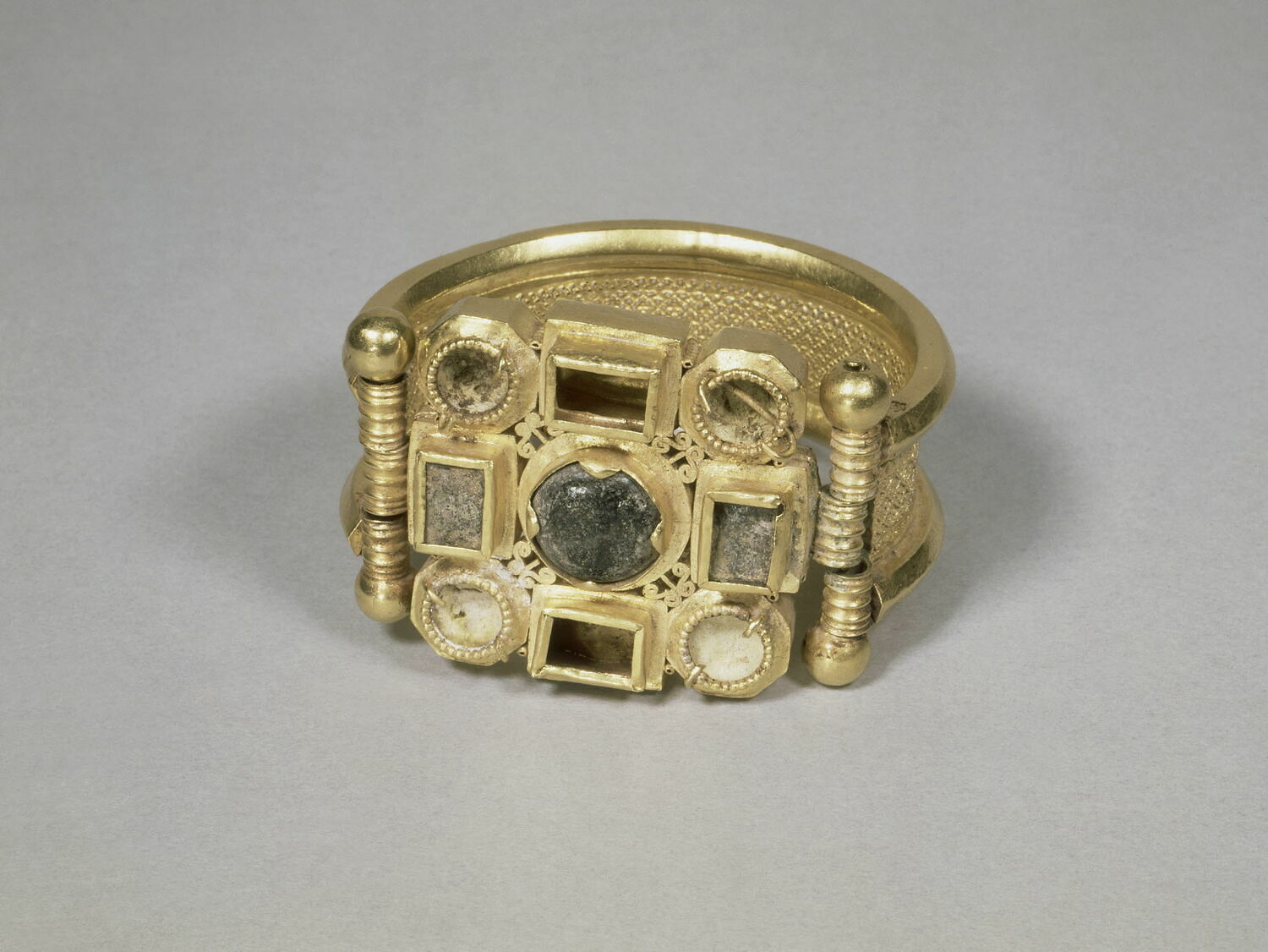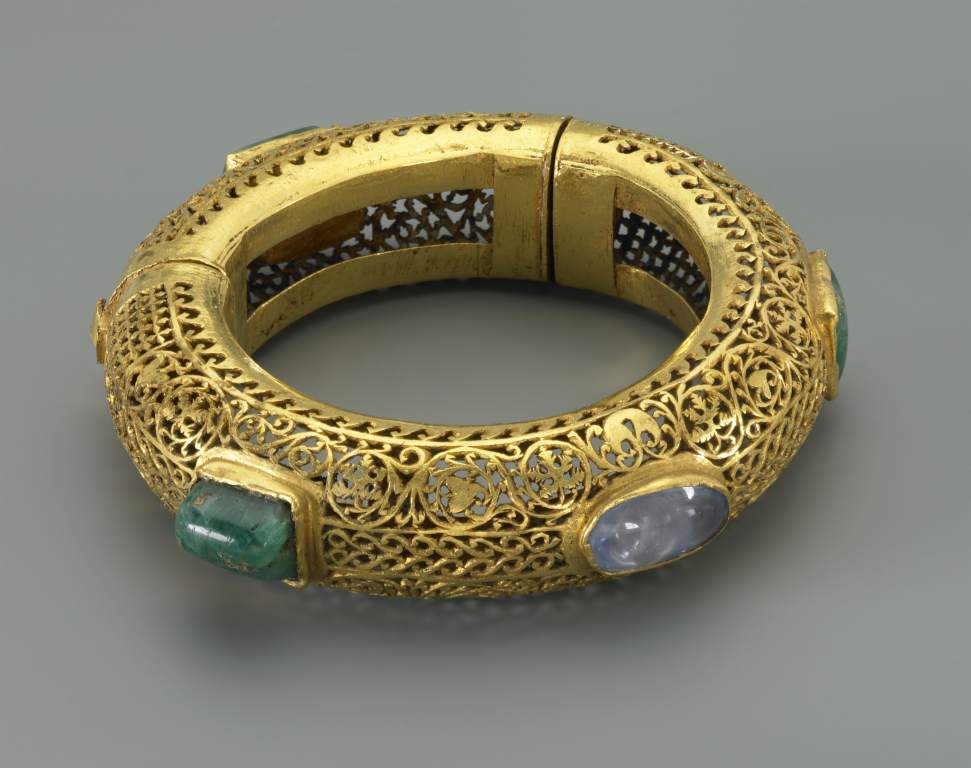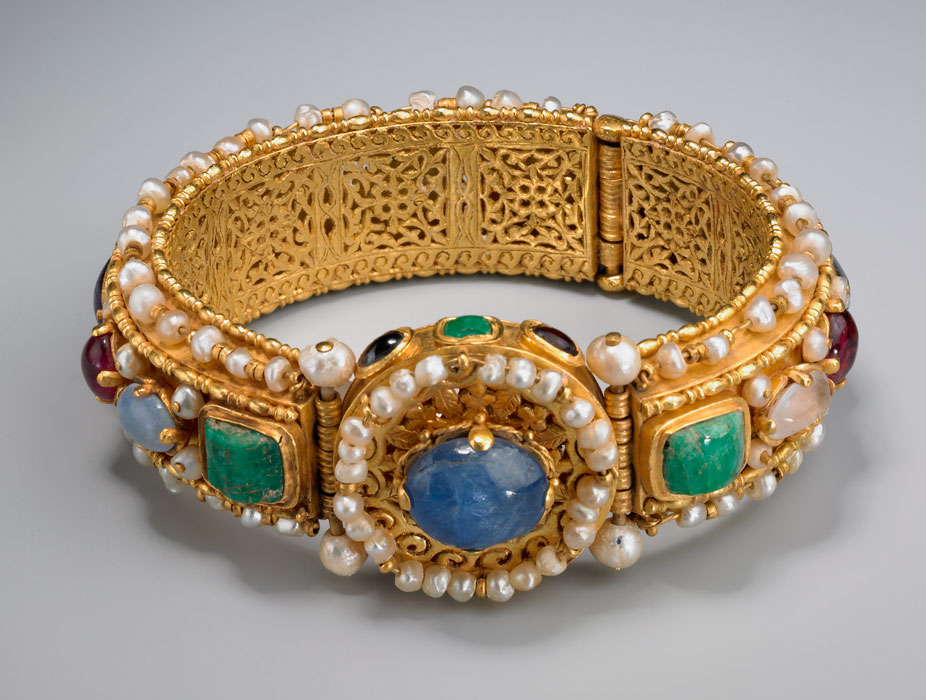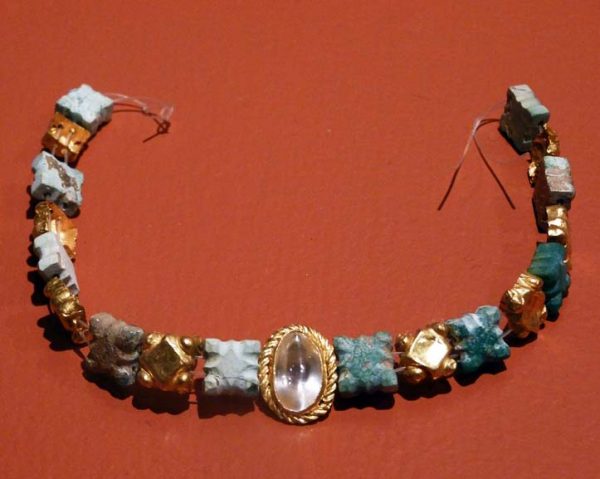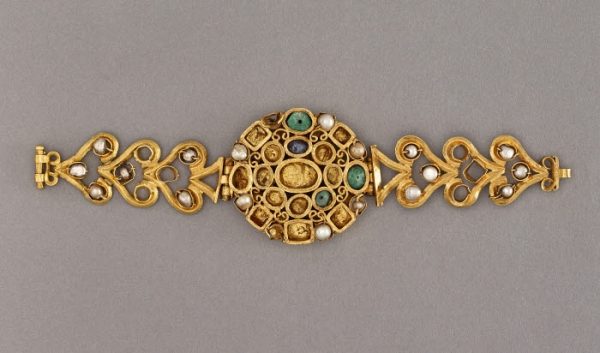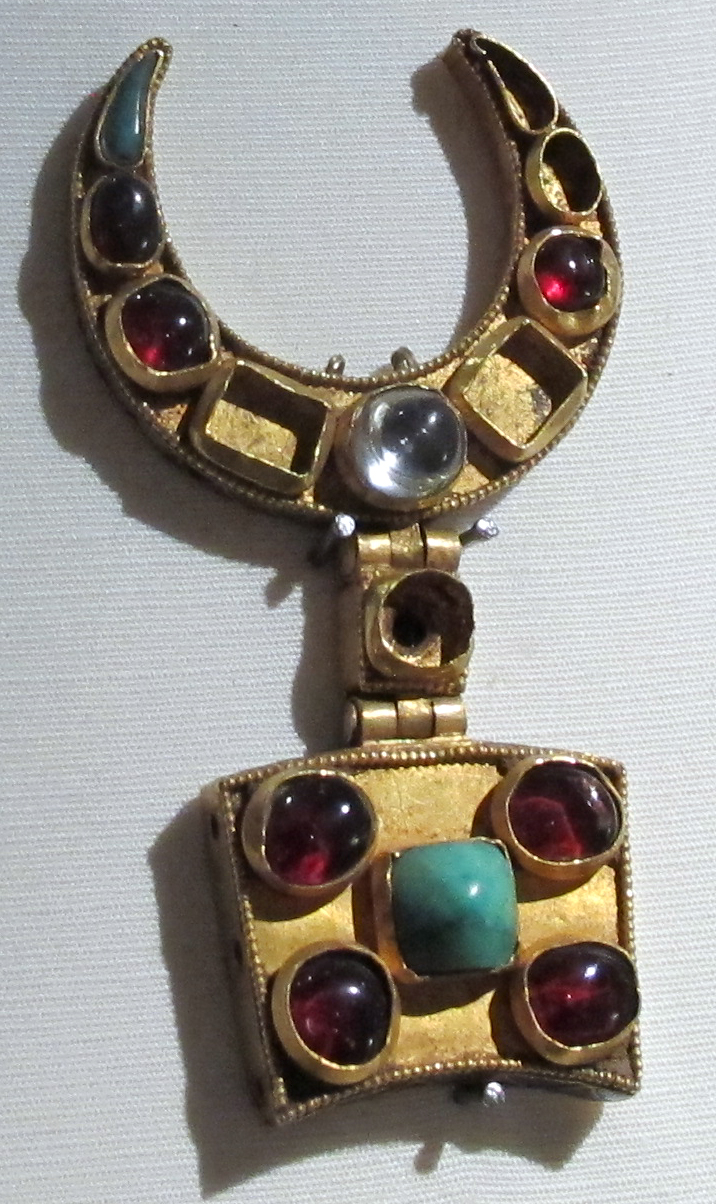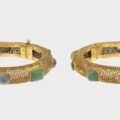
“An openwork band framed by turned-in, solid borders, this bracelet bedecked with colored stones and glass suited the Late Roman taste for heavy gold bracelets. The bracelet was made in two pieces, which were then hinged and secured with a screw pin. The openwork on this bracelet is particularly fine and delicate. Large emeralds, blue glass, and now-missing pearls contrast with the gold background of the bracelet, foreshadowing the Early Byzantine interest in polychromy. The gems are held by settings more elaborate than often seen in this period, including some raised settings that allow the light to show through the stone.”
Roman, ca 379–395 CE
In Getty museum



“A simple gold band with plain flanged edges forms this openwork bracelet. A vegetal scroll weaves across the surface of the band, into which hunting scenes are inserted. On one side a hound chases a stag, while on the other a hound pursues a hare.
Vegetal scrolls enlivened with figures among the leaves and vines began in Hellenistic art and remained popular throughout Roman art. The theme of the hunt was also a favorite subject in Late Roman art, taking on a larger, metaphorical meaning of victory in combat. Here, however, the hunt scenes include animals only and not the hunter.”
source

“A heavy gold band elaborated by colored stones and glass forms this massive gold bracelet.
The bracelet was made in two pieces, which were then hinged and secured with a pin decorated with green glass. The edges of the gold band are folded outwards at a perpendicular angle, forming a ledge that served to protect the stones. Blue, green, and red glass; emeralds; and now-missing pearls were placed in pairs in simple gold settings around the bracelet. The bracelet was unusually heavy and probably was not very comfortable to wear.
The shape of the bracelet is Roman, yet there is something distinctly non-Roman about it.
It resembles jewelry made on the edges of the Roman Empire, which merged Roman and native tastes.”
source


